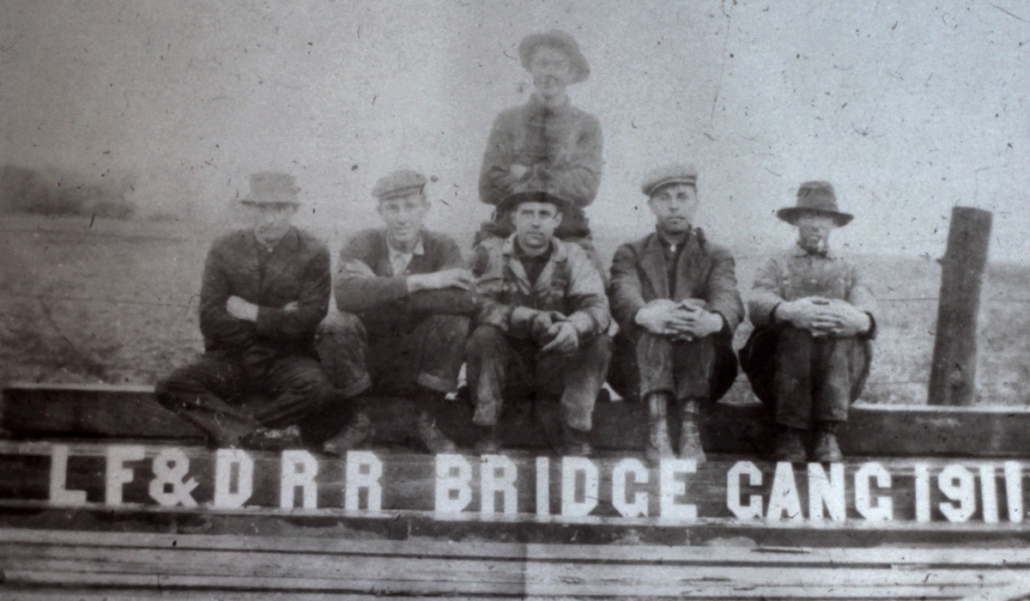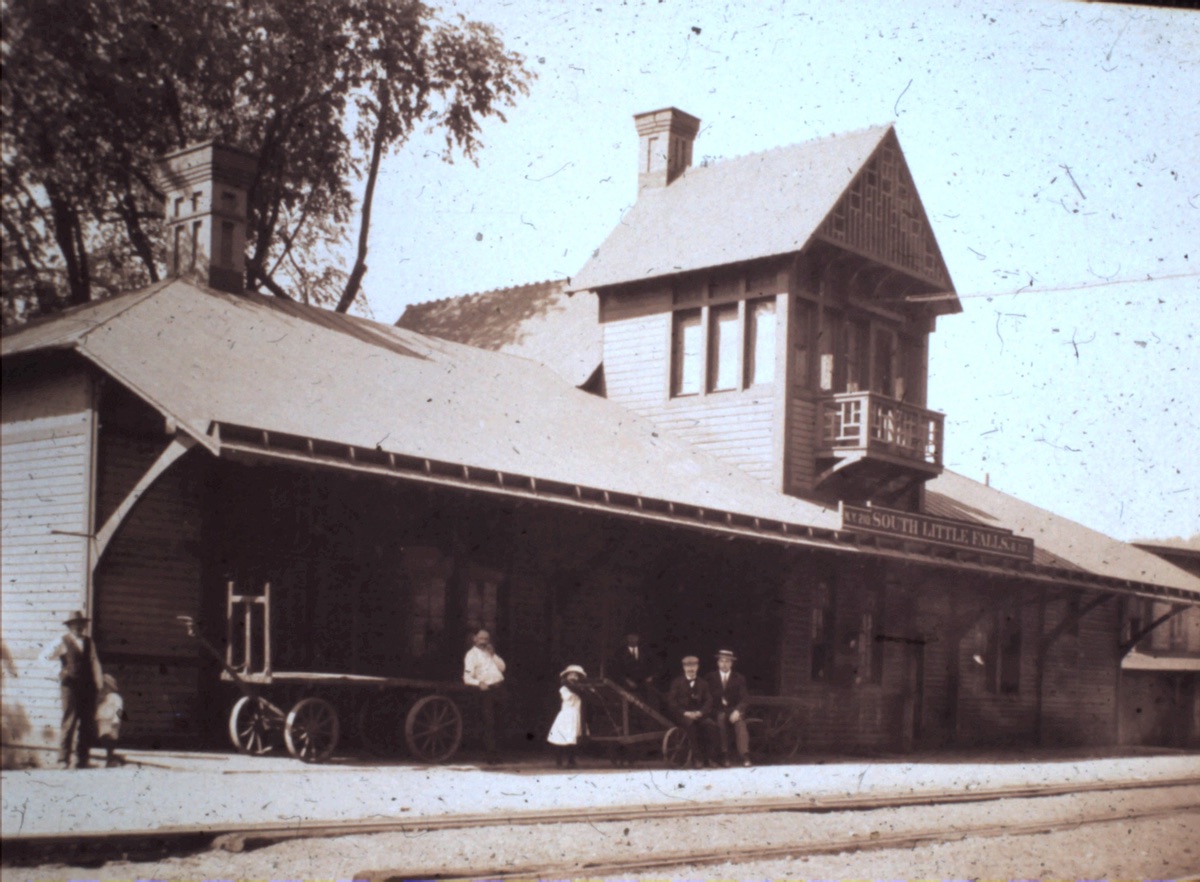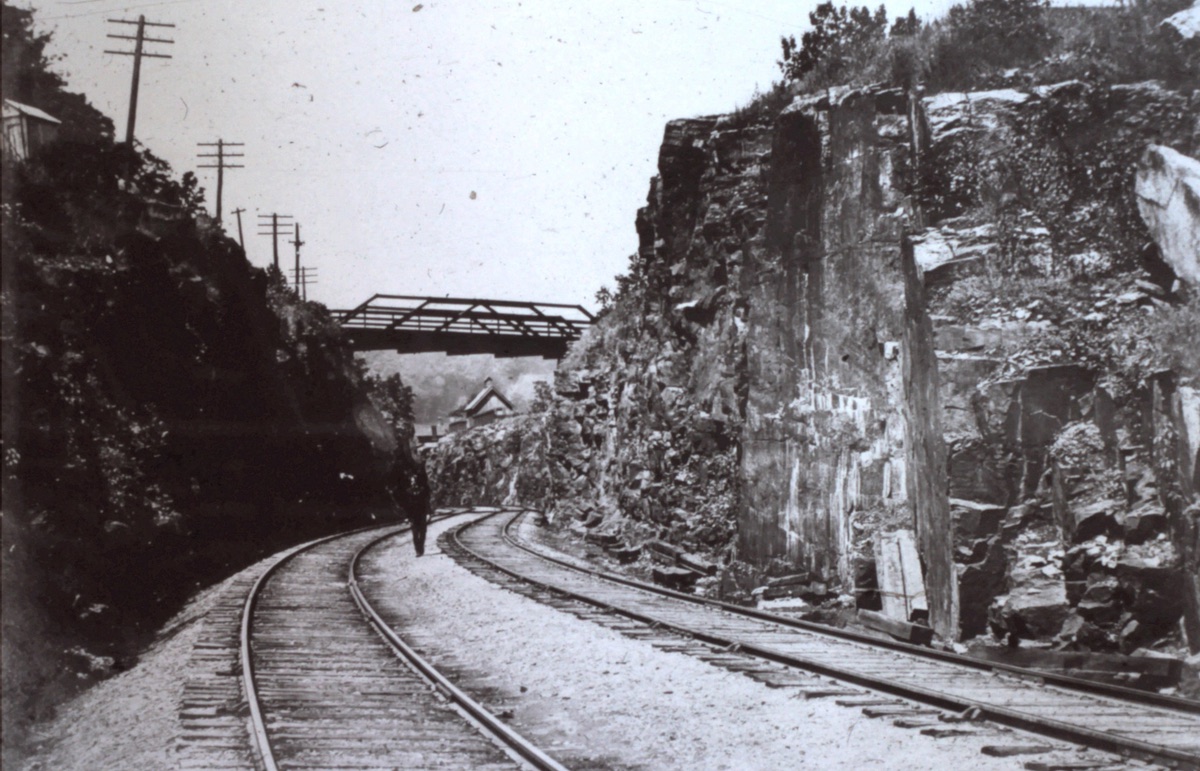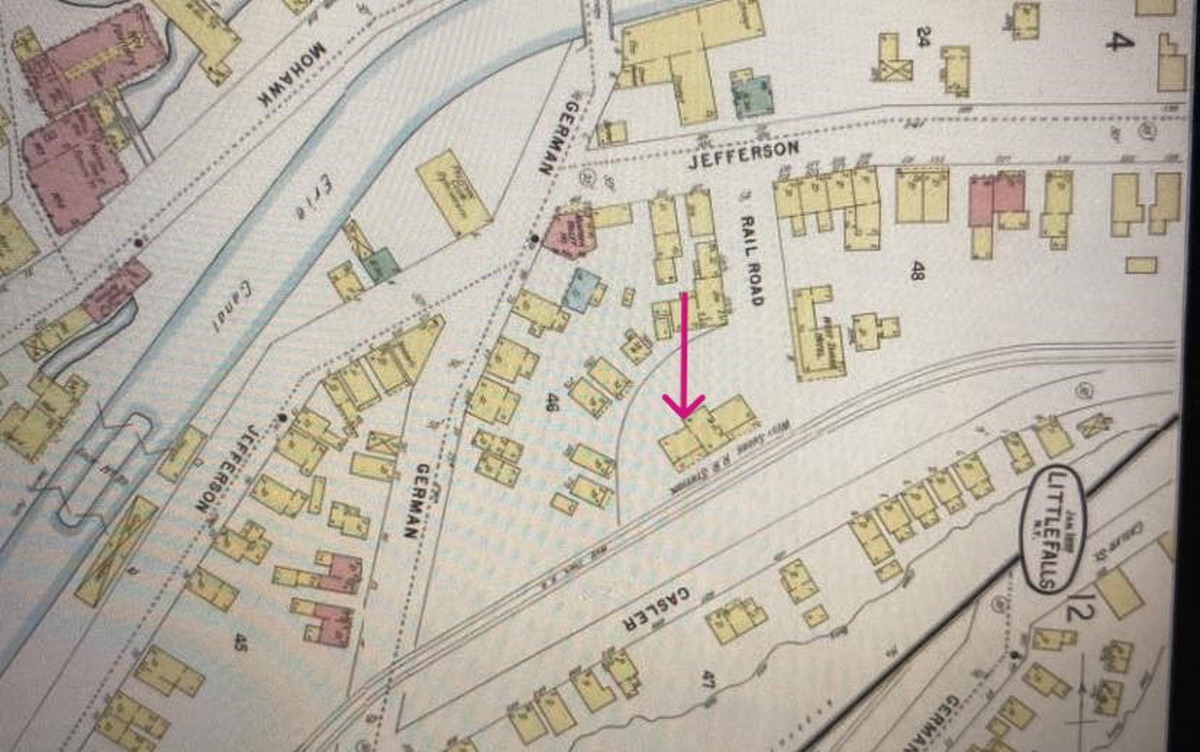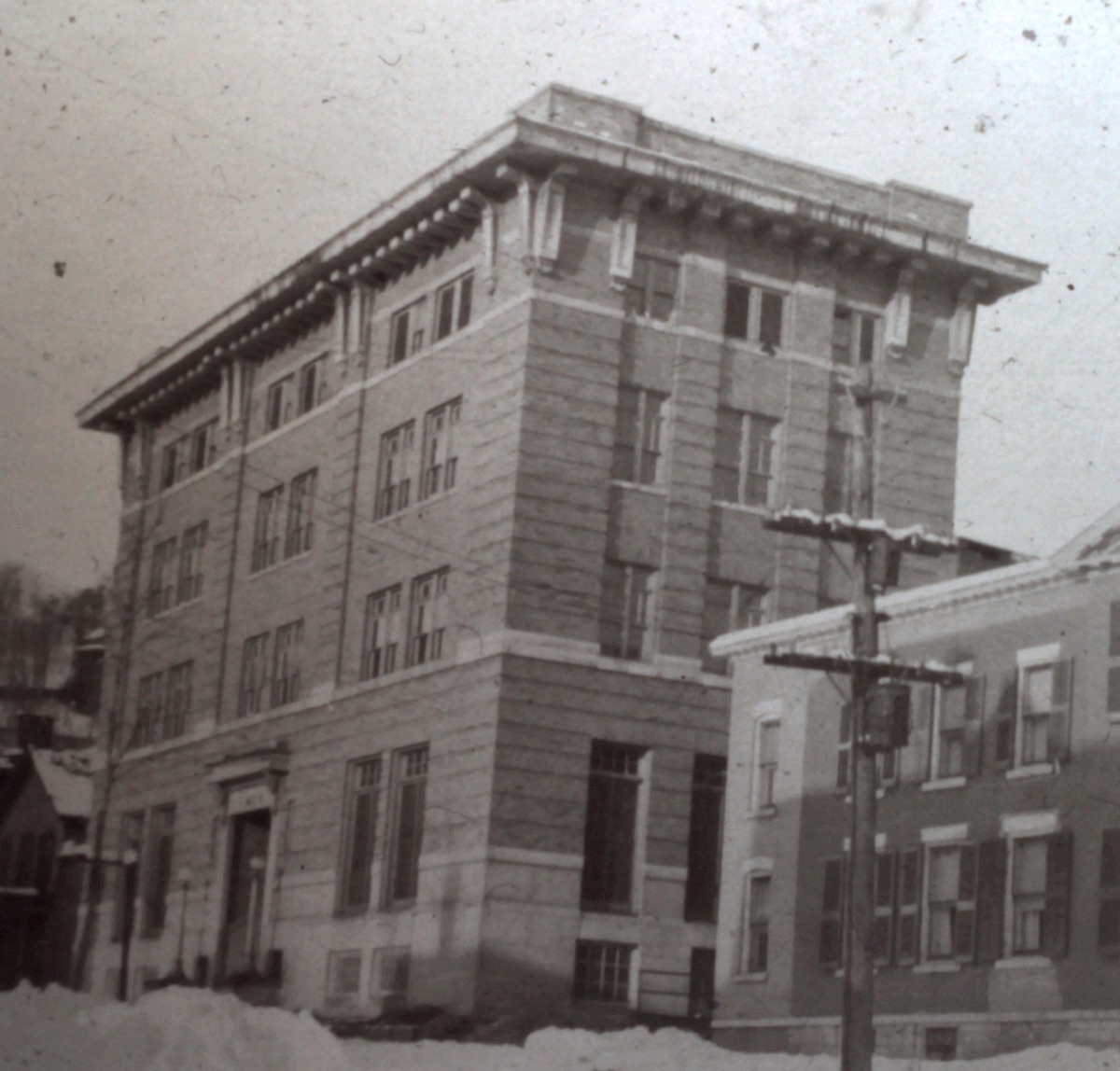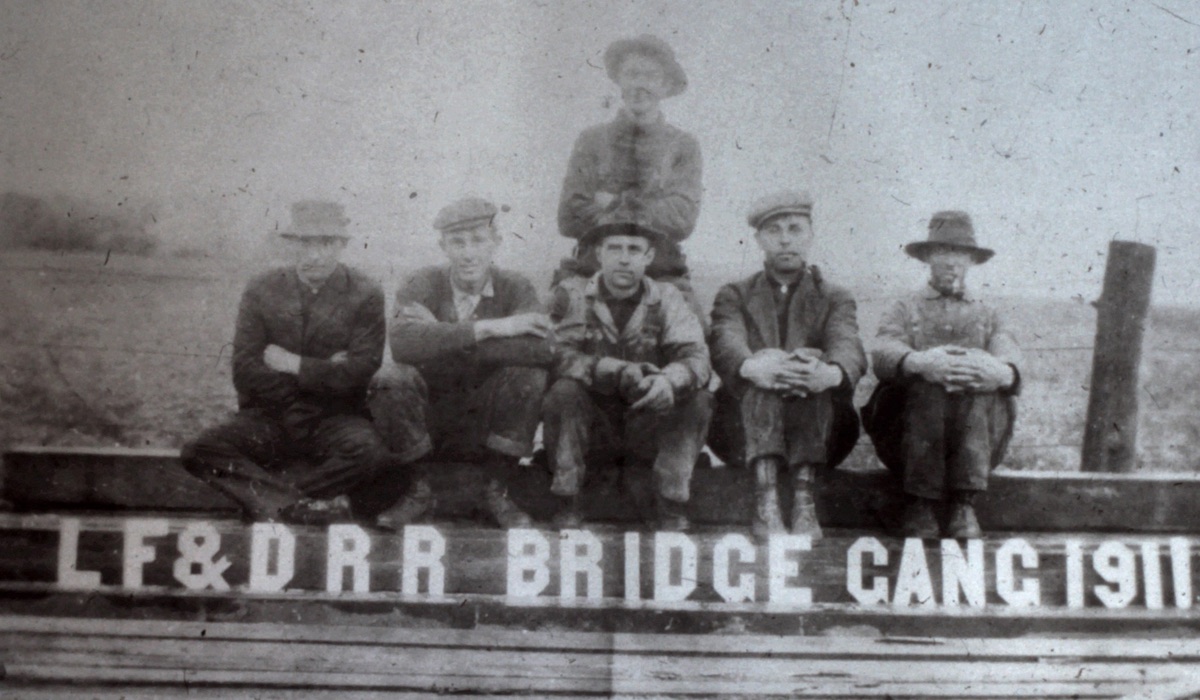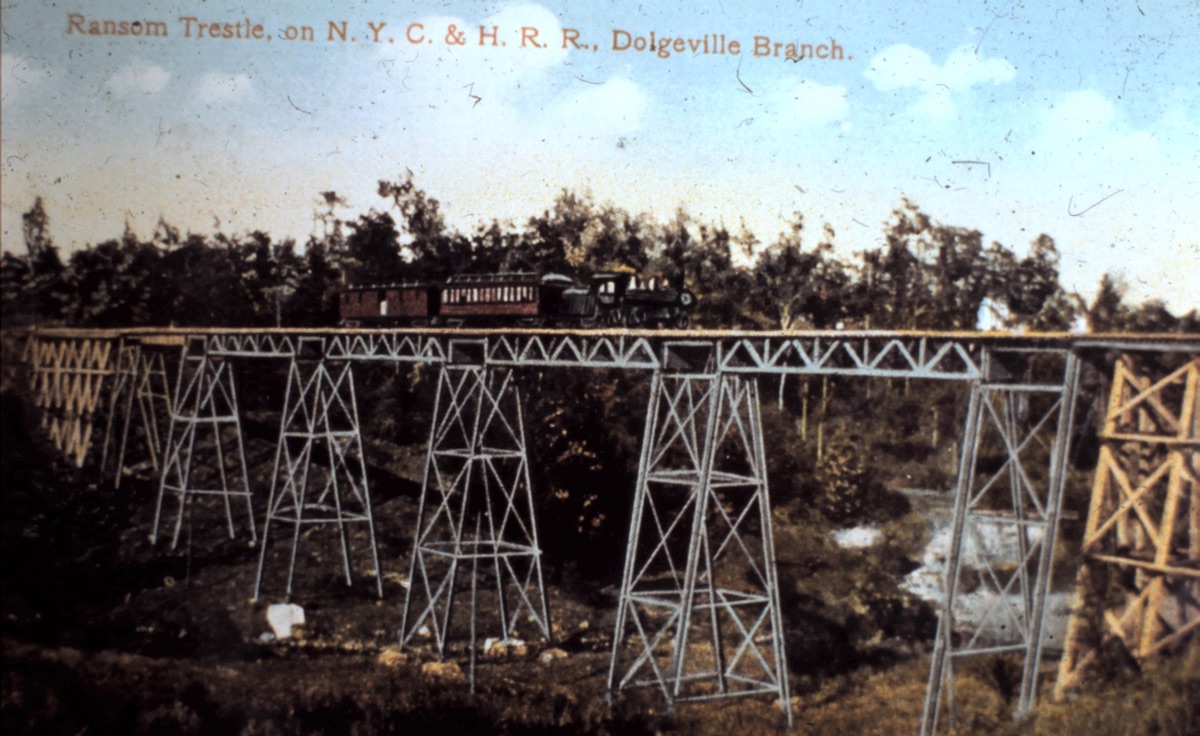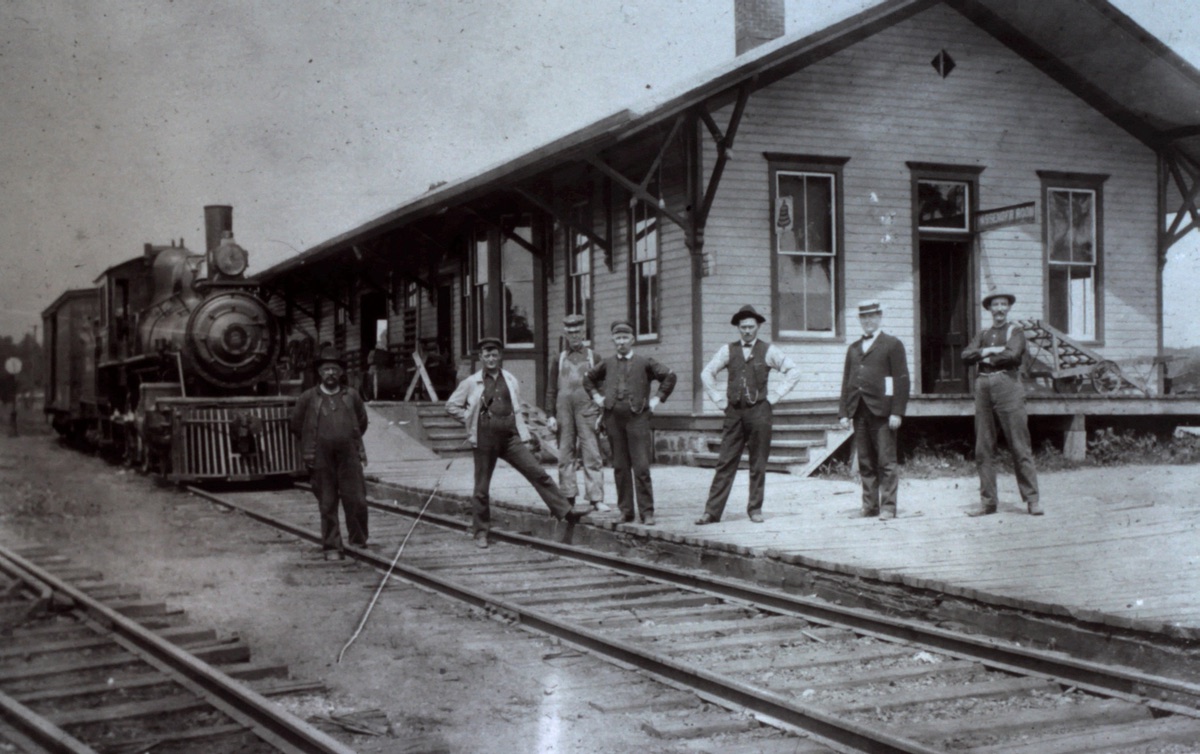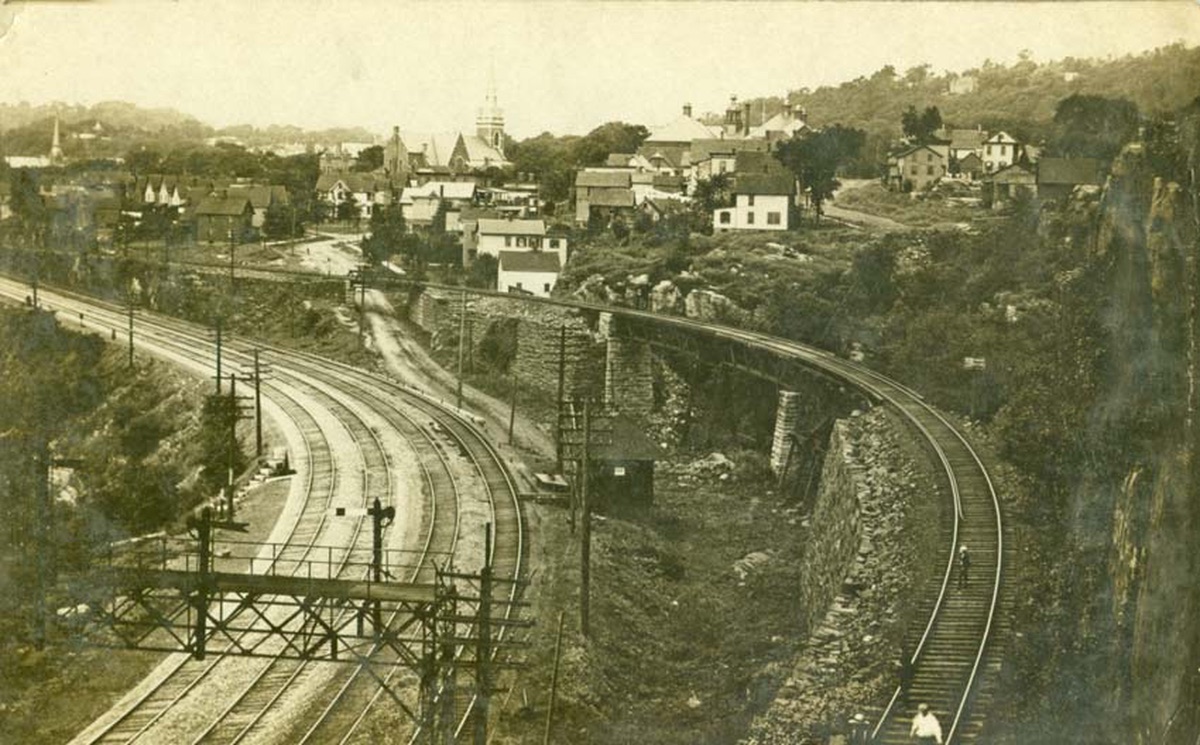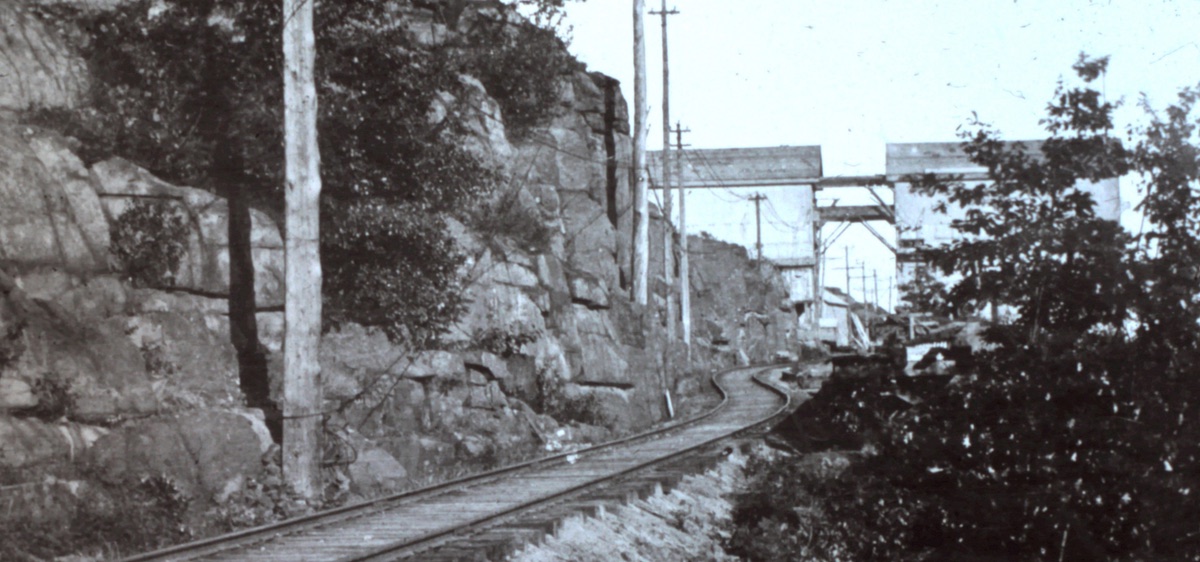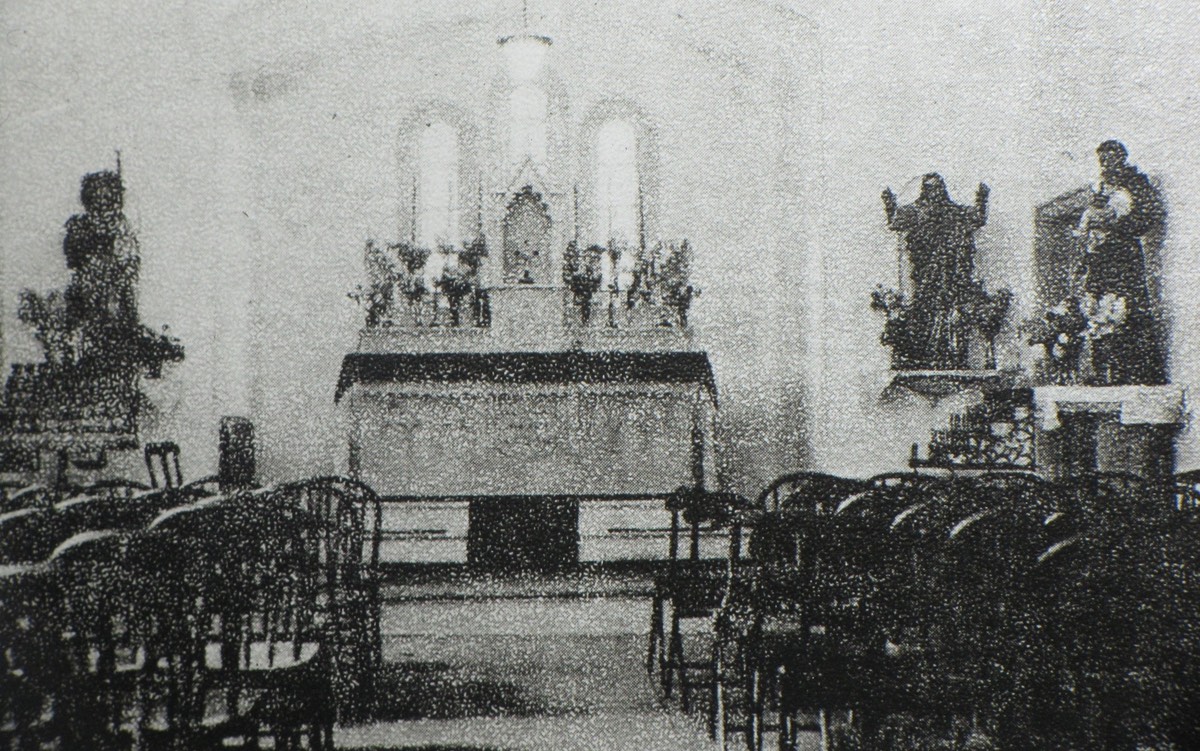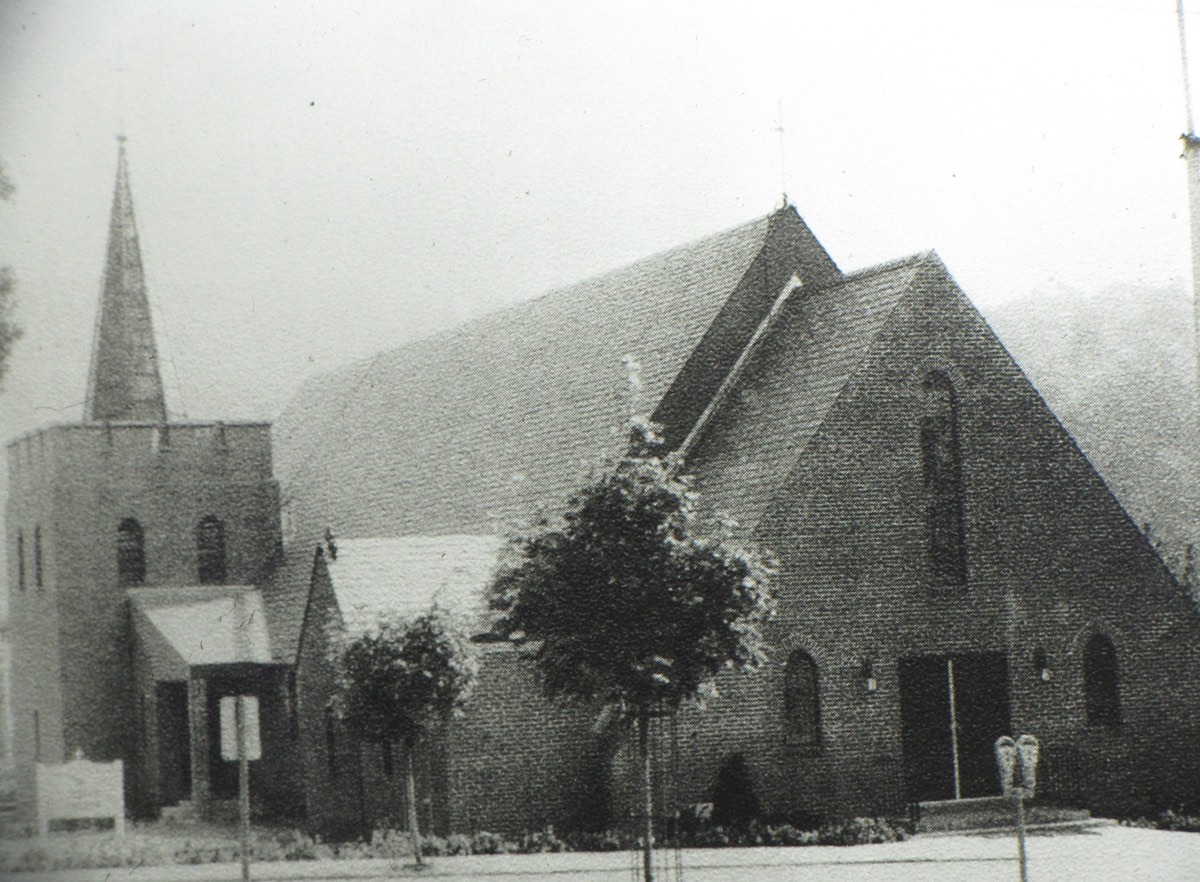FROM THE COONEY ARCHIVES: This Day In History …” On November 1, 1891, forty-eight Italians arrived in Little Falls from Buffalo, NY to work on the Little Falls – Dolgeville Railroad.
ITALIAN IMMIGRANTS FIND THEIR WAY TO LITTLE FALLS
The West Shore Railroad
According to the Cooney Archives, “the first large group of Italian immigrants to come to Little Falls were those engaged in building the West Shore Railroad. The New York Central was so prosperous that a rival line, the West Shore, was incorporated in 1880. It was a difficult task to blast a cut through the rocks at Little Falls, but the work was completed in October of 1883. Electric lights for the first time allowed the construction to be carried out all night. On December 11, 1885, the New York Central secured a 99-year lease of the West Shore.”
Young Men’s Christian Association Society
On October 21, 1881, the Young Men’s Christian Association Society first functioned in Little Falls as a “reading room” for young Italian men of the railroad, for their use to study Christianity. Reverend Francis Bellamy, of the First Baptist Church, served as the society secretary. In the beginning, the society used rented public rooms for their meetings in a building on the corner of John and Second Street, the Rockton Hotel.
In 1910, David H. Burrell gifted the lot at 15 Jackson Street and $50,000 to build the Presbyterian Parish House, so that the Young Men’s Christian Association had a place for meetings and recreation. Burrell was a devoted and consistent advocate for guiding and supporting young people within his community. Burrell laid the cornerstone of this building on November 6, 1911. The building was opened to the public for inspection on January 13, 1913, with it being called the “Citizens Association Building” by Burrell, for the use of all citizens. At a later date, it was renamed the Young Men’s Christian Association, which became known locally as the YMCA. The name of the building has recently changed, and it is presently known as the Little Falls Youth and Family Center.
The Little Falls-Dolgeville Railroad
The Little Falls-Dolgeville Railroad Company was first organized on February 20, 1891. On November 1st of that year, forty-eight Italians arrived in Little Falls from Buffalo, NY, to work on the Little Falls- Dolgeville Railroad. Alfred Dolge, a German industrialist from Dolgeville, NY, set out to build a rail line at his own expense, connecting the village of Dolgeville with the New York Central Railroad at Little Falls, NY. The rail line was opened in December of 1893.
Italian Community Bake Oven
The Italian immigrants who came to Little Falls, seeking a steady source of work, built a community bread oven in 1891 on the east side of the City of Little Falls. The location of the bake oven is in the woods between the most eastern end of Loomis Street and Route 167 North. The oven was built of brick and is contained within walls of stone, with the structure being 16 feet in width by 20 feet in length, with an overall height of 6 feet.
The Italian Community Bake Oven baked large quantities of bread, putting out up to 100 or more loaves a day. The oven was the central hub for the Italian laborers while providing the main staple of their diet. The Italian men sheltered in tents and huts within a transient work camp in the immediate area of the oven, as the villagers did not welcome them.
In 2006, the Italian Community Bake Oven was granted placement on the New York State and National Registry of Historic Places. In 2009, Preserve Our Past, a Little Falls non-profit group, along with former NY State Senator James L. Seward, secured a $15,000 grant to preserve the oven, one of Little Falls’ historic treasures. The structure received masonry repairs and a new roof.
St. Joseph’s Church
According to the Cooney Archives, “The Italians first came to little Falls for the construction of the West Shore Railroad in 1880s. Like the Irish sixty years previously, many remained, with their descendants still living in the city today. At first, the Italian population attended the Irish-built St. Mary’s Church. In 1923, St. Joseph’s Parish was formed, with a wooden-frame church built at the northeast corner of East John and Mary Streets. The Reverend Anthony Spina was the first pastor, and his home adjoined the church, a wooden-framed building on the east side. The church was opened on Sunday, July 29, 1923.
In 1933, after serving the parish for ten years, Father Spina was transferred, and the Reverend Joseph Connolly then became the pastor.
On January 23, 1937, tragedy struck the new parish, when fire destroyed the church and parish house. After looking over the ruins, it was decided that it would be more practical to build a new church than to repair the damaged one. The house and lot on the southwest corner of Albany and William Streets was purchased and the present brick church was built. It was consecrated on November 25 of the same year. The altar is of red Numidian marble and there are seats for 300 parishioners, with seating for 60 on the balcony. The frame house, west of the church, was purchased for the rectory.
In 1941 the Capuchin Sisters of the Infant of Jesus were established in St. Joseph’s and the Stanton house, on Hancock Street, was rented for their residence. Soon, the Sisters of the Presentation started serving the parish and they resided in the former rectory, west of the church. On October 10, 1943, the Dr. McEvilly house, to the rear of the church on John Street, was purchased for the pastor’s residence. On July 23, 1948, the twenty-fifth anniversary of the parish was celebrated, and Bishop Gibbons was there. In 1952 the Rev. Joseph Connolly was transferred, and the Rev. Anthony Perrone was appointed pastor.
On November 24, 1956, there was a mortgage-burning celebration at St. Joseph’s, as the entire cost of the new church had been paid off. Church services were held at 7:15 in the evening, followed by a dinner and dance in the DeCarlo-Staffo VFW Post rooms. All three pastors. Reverend Anthony Spina, Reverend Joseph Connolly, and Reverend Anthony Perrone were present.”
St. Joseph’s Church merged with the Holy Family Parish in 1992. The village Community Co-Op, which was formed as a health food shop in 1975, is now located in the building of St. Joseph’s Church.
*Digitizing of Historical Photos by Gail & Mike Potter, FROM THE COONEY ARCHIVES: THIS DAY IN HISTORY by Louis Baum, JR, and article written by Darlene Smith
Learn more about the Little Falls – Dolgeville Railroad Line.

